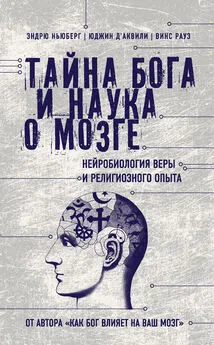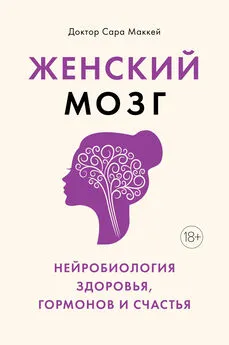Инна Воробей - Язык и мозг. Нейробиология раскрывает главную тайну человека
- Название:Язык и мозг. Нейробиология раскрывает главную тайну человека
- Автор:
- Жанр:
- Издательство:Array SelfPub.ru
- Год:2020
- ISBN:нет данных
- Рейтинг:
- Избранное:Добавить в избранное
-
Отзывы:
-
Ваша оценка:
Инна Воробей - Язык и мозг. Нейробиология раскрывает главную тайну человека краткое содержание
Язык и мозг. Нейробиология раскрывает главную тайну человека - читать онлайн бесплатно ознакомительный отрывок
Интервал:
Закладка:
68
Schlegel A.A., Rudelson J.J. & Tse P.U. (2012). White matter structure changes as adults learn a second language. Journal of Cognitive Neuroscience, 24(8), 1664–1670. https://doi.org/10.1162/jocn_a_00240
69
В англоязычной научной литературе это явление называют «TOT-phenomenon» или «ТОТ-state» , от английского выражения «tip-of-the-tongue» .
70
Maril A., Simons J.S., Weaver J.J. & Schacter D.L. (2005). Graded recall success: An event-related fMRI comparison of tip of the tongue and feeling of knowing. NeuroImage, 24(4), 1130–1138. https://doi.org/10.1016/j.neuroimage.2004.10.024
71
Schwartz B.L. & Metcalfe J. (2011). Tip-of-the-tongue (TOT) states: Retrieval, behavior, and experience. Memory and Cognition, 39(5), 737–749. https://doi.org/10.3758/s13421-010-0066-8
72
Babcock L. & Vallesi A. (2017). Are simultaneous interpreters expert bilinguals, unique bilinguals, or both? Bilingualism, 20(2), 403–417. https://doi.org/10.1017/S1366728915000735
73
Интервью – февраль, 2018 год.
74
Там же.
75
Hernandez A. (2013). The Bilingual Brain. Oxford University Press.
76
Мультилингвы выучивают свои языки в раннем детстве.
77
Эрард М. Феномен полиглотов. М.: Альпина Бизнес Букс, 2013.
78
https://ru.wikipedia.org/wiki/Мельников, _Вилли
79
Никуличева Д. Как найти свой путь к иностранным языкам. Лингвистические и психологические стратегии полиглотов. Флинта, 2009.
80
Лингвогобелены Вилли Мельникова можно посмотреть здесь: -art.ru/gallery/lingvogobelen/index.html
81
Эрард М. Феномен полиглотов. М.: Альпина Бизнес Букс, 2013.
82
https://www.kommersant.ru/doc/1852256
83
Никуличева Д. Как найти свой путь к иностранным языкам. Лингвистические и психологические стратегии полиглотов. Флинта, 2009. С. 135.
84
https://www.newyorker.com/culture/personal-history/emilia-clarke-a-battle-for-my-life-brain-aneurysm-surgery-game-of-thrones
85
https://www.ted.com/talks/jill_bolte_taylor_my_stroke_of_insight
86
https://www.youtube.com/watch?v=9Q62kvUp8qI&t=30s
87
www.hackneygazette.co.uk/news/health/strangers-assumed-mum-was-drunk-1-4346219
88
В России и на Западе используют разные подходы к классификации афазий. На Западе опираются на модель Лихтгейма – Вернике, доработанную Норманом Гешвиндом. В России распространена классификация нейропсихолога А. Р. Лурии. Так как основная масса нейроисследований языковых нарушений проводится зарубежными учёными, я сосредоточусь на западной классификации.
89
Лурия А. Р. Основные проблемы нейролингвистики. Изд-во Московского университета, 1975. – С. 78.
90
Teive H.A.G., Munhoz R.P. & Caramelli P. (2011). Historical aphasia cases: «Tan-tan», «Vot-vot», and «Cré nom!» Arquivos de Neuro-Psiquiatria, 69(3), 555–558. https://doi.org/10.1590/s0004-282x2011000400027
91
По А.Р. Лурия сенсорная, акустико-мнестическая.
92
https://postnauka.ru/faq/76344
93
Лурия А. Р. Основные проблемы нейролингвистики. Изд-во Московского университета, 1975. – С. 136.
94
Fridriksson J., Yourganov G., Bonilha L., Basilakos A., Den Ouden D. B. & Rorden C. (2016). Revealing the dual streams of speech processing. Proceedings of the National Academy of Sciences of the United States of America, 113(52), 15108—15113. https://doi.org/10.1073/pnas.1614038114
95
Fridriksson J., Den Ouden D.B., Hillis A.E., Hickok G., Rorden C., Basilakos A., Bonilha L. (2018). Anatomy of aphasia revisited. Brain, 141(3), 848–862. https://doi.org/10.1093/brain/awx363
96
Этот и другие примеры афазии при многоязычии взяты из Hernandez A. (2013). The Bilingual Brain.
97
Patterson K., Nestor P.J. & Rogers T.T. (2007). Where do you know what you know? The representation of semantic knowledge in the human brain. Nature Reviews Neuroscience, 8(12), 976–987. doi:10.1038/nrn2277
98
Ullman, M. T. (2001). A neurocognitive perspective on language: The declarative/procedural model. Nature Reviews Neuroscience, 2(10), 717–726. https://doi.org/10.1038/35094573
99
Интервью с О.Драгой опубликовано в сургутской газете «Новый город», сентябрь 2016 года.
100
В первом случае в английском языке нужно добавить к слову окончание s, а во втором – ed.
101
Friederici, A. D. (2006, December 21). The Neural Basis of Language Development and Its Impairment. Neuron. https://doi.org/10.1016/j.neuron.2006.12.002
102
https://www.businessinsider.com/stuttering-celebrities-famous-people-2019-11
103
https://www.cbs.mpg.de/Stottern-im-Gehirn
104
Учёные различают рабочую память и кратковременную. Кратковременная память поддерживает небольшие объёмы информации в активном состоянии. То, что это два разных хранилища информации, доказывают случаи пациентов с антероградной амнезией – неспособностью запоминать новые факты и эпизоды из жизни. Однако они ненадолго – до 30 секунд – сохраняют небольшое количество информации.
105
Amici F., Sánchez-Amaro A., Sebastián-Enesco C., Cacchione T., Allritz M., Salazar-Bonet J. & Rossano F. (2019). The word order of languages predicts native speakers’ working memory. Scientific Reports, 9(1). https://doi.org/10.1038/s41598-018-37654-9
106
https://www.spektrum.de/news/ein-fast-perfektes-gedaechtnis/1188923
107
Hagoort P. (2013). MUC (memory, unification, control) and beyond. Frontiers in Psychology, 4(JUL). https://doi.org/10.3389/fpsyg.2013.00416
108
Ullman, M. T. (2001). A neurocognitive perspective on language: The declarative/procedural model. Nature Reviews Neuroscience, 2(10), 717–726. https://doi.org/10.1038/35094573
109
Психологи, которые считали, что поведение складывается из рефлексов и реакции на стимулы из внешней среды.
110
Цит. по Harley T.A. Talking the Talk: Language, Psychology and Science. London: Taylor & Francis Group, 2017. 314 p. – P. 90.
111
Harley T.A. Talking the Talk: Language, Psychology and Science. London: Taylor & Francis Group, 2017. 314 p. – P. 90.
112
Lecours A. & Joanette Y. (1980). Linguistic and other psychological aspects of paroxysmal aphasia. Brain and Language, 10(1), 1—23. https://doi.org/10.1016/0093-934X(80)90034-6
113
Fedorenko E. & Varley R. (2016). Language and thought are not the same thing: Evidence from neuroimaging and neurological patients. Annals of the New York Academy of Sciences, 1369(1), 132–153. https://doi.org/10.1111/nyas.13046
114
Harley T.A. Talking the Talk: Language, Psychology and Science. London: Taylor & Francis Group, 2017. 314 p. – P. 101.
115
Boroditsky L. (2001). Does Language Shape Thought?: Mandarin and English Speakers’ Conceptions of Time. Cognitive Psychology, 43(1), 1—22. https://doi.org/10.1006/cogp.2001.0748
116
Boroditsky L. (2012). How the Languages We Speak Shape the Ways We Think: The FAQs. The Cambridge Handbook of Psycholinguistics. Cambridge, England: Cambridge UP, 2012. Pp. 615–632.
117
Harley T.A. Talking the Talk: Language, Psychology and Science. London: Taylor & Francis Group, 2017. 314 p.
118
Winawer J., Witthoft N., Frank M.C., Wu L., Wade A. R. & Boroditsky L. (2007). Russian blues reveal effects of language on color discrimination. Proceedings of the National Academy of Sciences of the United States of America, 104(19), 7780–7785. https://doi.org/10.1073/pnas.0701644104
119
Boroditsky L., Schmidt L. & Phillips W. (2003). Sex, Syntax, and Semantics. In Gentner, D. & Goldin-Meadow, G. (Eds.) Language in Mind: Advances in the study of Language and Cognition (pp. 61–80). Cambridge: MIT Press.
120
Segel E. & Boroditsky L. (2011). Grammar in art. Frontiers in Psychology, 1(JAN). https://doi.org/10.3389/fpsyg.2010.00244
121
Boroditsky L., Ham W. & Ramscar M. (2019). What is universal in event perception? Comparing English & Indonesian speakers. In Proceedings of the Twenty-Fourth Annual Conference of the Cognitive Science Society (pp. 136–141). Routledge. https://doi.org/10.4324/9781315782379-61
122
Hauser, M. D. (2002). The Faculty of Language: What Is It, Who Has It, and How Did It Evolve? Science, 298(5598), 1569–1579. doi:10.1126/science.298.5598.1569
123
Kuhl, P. K., & Miller, J. D. (1975). Speech perception by the chinchilla: Voiced-voiceless distinction in alveolar plosive consonants. Science, 190(4209), 69–72. https://doi.org/10.1126/science.1166301
124
Kuhl, P. K. (1981). Discrimination of speech by nonhuman animals: Basic auditory sensitivities conducive to the perception of speech-sound categories. Journal of the Acoustical Society of America, 70(2), 340–349. https://doi.org/10.1121/1.386782
Читать дальшеИнтервал:
Закладка:
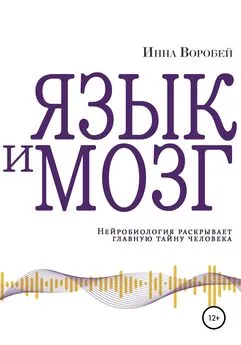

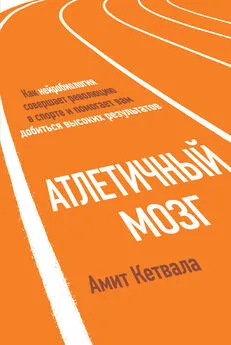
![Дмитрий Филиппов - Вскрытие мозга [Нейробиология психических расстройств]](/books/1067571/dmitrij-filippov-vskrytie-mozga-nejrobiologiya-psi.webp)
![Коллектив авторов - Мозг и сознание [Разгадка величайшей тайны человеческого мозга] [litres]](/books/1075092/kollektiv-avtorov-mozg-i-soznanie-razgadka-velicha.webp)
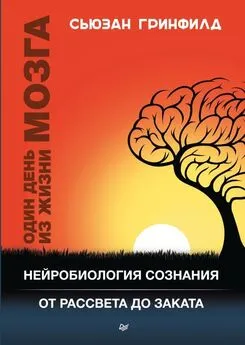
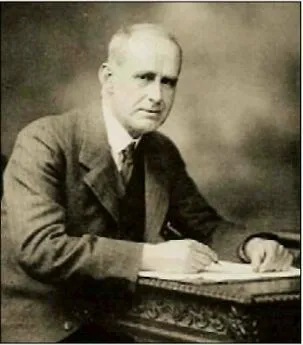
![Амит Кетвала - Атлетичный мозг [Как нейробиология совершает революцию в спорте и помогает вам добиться высоких результатов]](/books/1101771/amit-ketvala-atletichnyj-mozg-kak-nejrobiologiya-so.webp)
